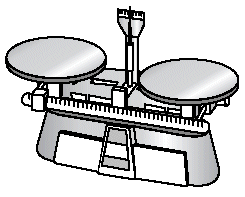Measuring Matter
Answers for ‘How Do we Measure Matter?’ homework:
1.
a. V
b. W
c. M
d. M
e. W
f. V
g. V
h. V
i. V
j. W
k. W
l. M
m. W
n. V
2. Justification- Weight depends on the size of the planet. The bigger the planet, the more your weight.
3. Since the object is hollow, fill it with a liquid. A liquid does not have a definite shape and will therefore fill up the entire object. Next, pour the water into a graduated cylinder and measure the amount of water in the graduated cylinder. Since the object is larger than a graduated cylinder, you will have to repeat this process until all the water in the object has been emptied out. Then you will have to add up all the measurements from the graduated cylinder to get the total volume of the object.
4. Mass = 10 kg; Weight = 10 lbs; Mass stays the same since it measures the amount of “stuff” in an object. The amount of stuff won’t change even if an object changes locations. The weight is 1/6 less on the moon than on Earth due to the moon’s smaller size. Weight depends on location, specifically the gravitational field.
5. Volume = 467.5 cm3 (10cm x 8.5cm x 5.5cm)
6. 22 mL (72mL-50mL)
7. The statement is incorrect because the wrong unit of measurement is used with the unit kilogram. Correct: The apple has a mass of 1 kilogram OR The apple weights 1 Newton.


